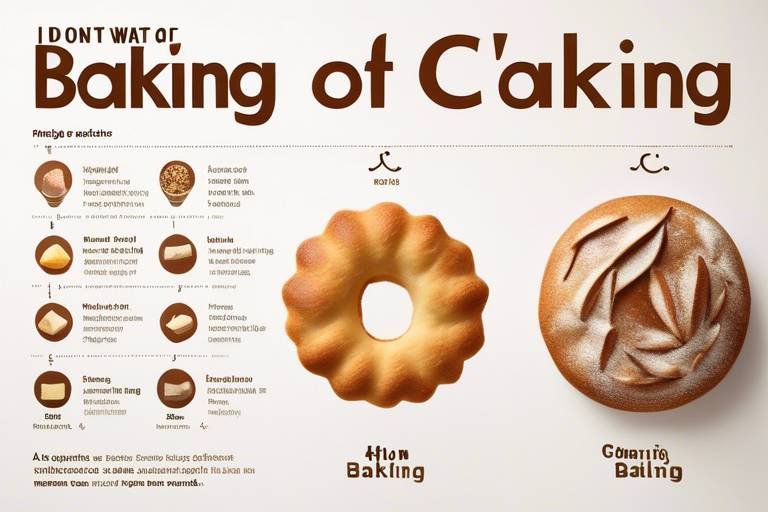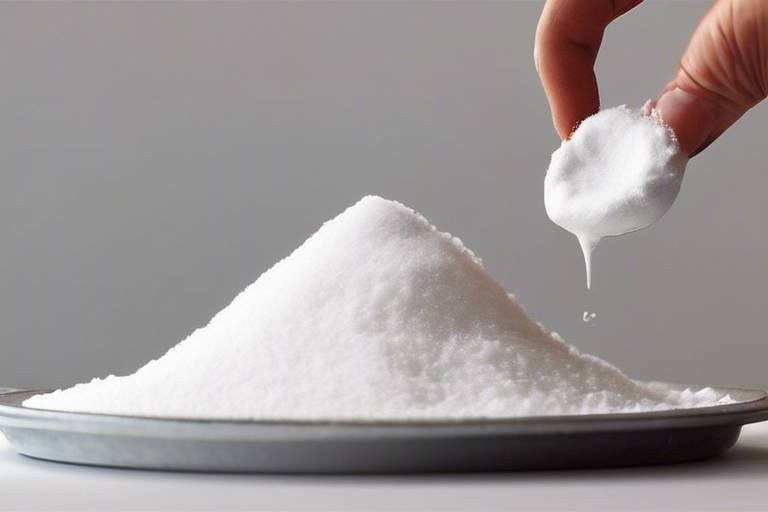The Physics of Kitesurfing - Understanding Wind and Water
Kitesurfing is more than just a thrilling water sport; it’s a beautiful dance between wind and water. Imagine gliding over the ocean's surface, propelled by the wind, with the sun kissing your skin and the waves cheering you on. This exhilarating sport combines elements of surfing and paragliding, making it a unique experience that draws enthusiasts from all walks of life. But to truly master kitesurfing, one must delve into the fundamental principles that govern it. In this article, we will explore the intricate interplay between wind dynamics and water physics, essential knowledge for anyone eager to conquer the waves.
At its core, kitesurfing involves maneuvering a large kite to harness the power of the wind. The kite acts as a sail, capturing wind and converting it into forward motion. Understanding its basic mechanics is crucial for beginners to safely enjoy the sport. When you first step onto the water, it might feel overwhelming, but with a little knowledge and practice, you’ll soon be flying across the waves like a pro.
The equipment typically consists of a kite, a board, and a harness. The kite is tethered to the rider via lines, while the harness connects the rider to the kite, allowing for better control and reduced fatigue. As you learn to balance these components, you'll discover that kitesurfing is not just about strength; it's about finesse, timing, and understanding the environment around you.
Wind is the driving force behind kitesurfing. Without wind, there’s no lift, and without lift, there’s no ride! Understanding how wind speed, direction, and patterns affect kite performance and rider control is essential for a successful experience on the water. Just like a musician reads the notes before playing a symphony, a kitesurfer must learn to read the wind, which can be as unpredictable as a jazz solo.
Different types of wind can significantly influence your kitesurfing experience. Let’s break down some of the most common wind types you’ll encounter:
- Thermal Winds: These winds are created by the uneven heating of the earth's surface, often found in coastal areas. They can provide consistent wind conditions, making them ideal for kitesurfing.
- Gradient Winds: These winds occur due to pressure differences in the atmosphere. They can vary in strength and direction, adding an element of surprise to your session.
- Sea Breezes: Generated by temperature differences between land and water, sea breezes often kick in during the afternoon, providing excellent conditions for kitesurfers.
Understanding thermal winds can help kitesurfers choose the best times and locations for optimal wind conditions. Typically, these winds are light in the morning and pick up as the day progresses. If you’re planning a kitesurfing trip, aim for those afternoons when the thermal winds are at their peak.
Sea breezes occur due to the temperature differences between land and water. As the sun heats the land, the air above it rises, creating a low-pressure area. Cooler air from the sea rushes in to fill this void, creating a refreshing breeze. Knowing how to take advantage of these winds can enhance a kitesurfer's performance and enjoyment, making your time on the water even more thrilling.
Recognizing wind patterns is essential for kitesurfers. Just like a sailor navigates by the stars, a kitesurfer must learn to read the wind and predict changes. Observing the flags, trees, and water surface can provide valuable clues about wind direction and strength. The more you practice, the better you'll become at anticipating shifts, allowing you to optimize your ride and stay safe during your sessions.
While wind is crucial, the dynamics of water also play a significant role in kitesurfing. Understanding wave formation and current behavior can help you navigate the waters more effectively. The interaction between your kite and the waves can either enhance your ride or create challenges, so it’s essential to grasp these concepts.
Understanding wave mechanics helps kitesurfers navigate and utilize waves effectively. Waves are created by wind blowing over the surface of the water, and they come in various shapes and sizes. Knowing how to ride these waves can turn an ordinary session into an extraordinary one. The thrill of catching a wave and feeling it propel you forward is what keeps many kitesurfers coming back for more.
Currents and tides significantly impact kitesurfing conditions. Understanding how to assess these factors ensures safe and enjoyable kitesurfing experiences. For instance, riding against a strong current can be exhausting, while riding with it can feel like you’re flying. Always check local tide charts and current reports before heading out, as this knowledge can make all the difference in your kitesurfing adventure.
Q: What is the best wind speed for kitesurfing?
A: Generally, wind speeds between 12 to 25 knots are ideal for kitesurfing, depending on your skill level and kite size.
Q: Do I need to know how to surf before kitesurfing?
A: While it helps to have some surfing experience, it is not a requirement. Many beginners start kitesurfing without prior surfing knowledge.
Q: What safety gear should I wear?
A: Essential safety gear includes a helmet, impact vest, and a life jacket. These items can protect you in case of falls or accidents.

Basics of Kitesurfing
This article explores the fundamental principles of kitesurfing, focusing on the interplay between wind dynamics and water physics, essential for mastering this exhilarating sport.
Kitesurfing is an exciting sport that merges the thrill of surfing with the freedom of paragliding. At its core, it involves riding on a board while being propelled by a large, controllable kite. This kite captures the wind's energy, allowing the rider to glide across the water, perform jumps, and even execute tricks. For beginners, grasping the basic mechanics of kitesurfing is crucial to ensure not just enjoyment but also safety while navigating the waters.
The fundamental components of kitesurfing include the kite, the board, and the harness. The kite is the powerhouse of the sport, designed to catch the wind and lift the rider off the water. Kites come in various shapes and sizes, each tailored for different wind conditions and riding styles. The board acts like a surfboard but is specifically designed to handle the forces generated by the kite. Finally, the harness connects the rider to the kite's lines, allowing them to control the kite's position and power with minimal effort.
Before hitting the water, it's essential for kitesurfers to familiarize themselves with the equipment. This includes understanding how to set up the kite, how to launch and land it safely, and how to control it while riding. Knowledge of the wind conditions and water environment is equally important. For instance, a kitesurfer must learn to read the wind and choose appropriate locations based on wind strength and direction.
Here are some key points to remember as you dive into kitesurfing:
- Safety First: Always wear a life jacket and a helmet, and be aware of your surroundings.
- Practice on Land: Before heading to the water, practice flying your kite on land to get a feel for its responsiveness.
- Know Your Limits: Start with light winds and gradually progress to stronger winds as you gain confidence and skill.
Understanding the basics of kitesurfing not only enhances your experience but also prepares you for the more advanced techniques and maneuvers that await you in this thrilling sport. With practice and knowledge, you’ll find yourself riding the waves and soaring through the air in no time!
As you embark on your kitesurfing journey, you may have some questions. Here are a few common inquiries:
- What equipment do I need to start kitesurfing? You will need a kite, a board, a harness, and safety gear like a helmet and life jacket.
- How do I choose the right kite size? Kite size depends on your weight, skill level, and wind conditions. Lighter winds require larger kites, while stronger winds are better suited for smaller kites.
- Is kitesurfing safe? Yes, as long as you follow safety guidelines, use the right equipment, and understand the conditions of the water and wind.

Wind Dynamics
When it comes to kitesurfing, are the heartbeat of the sport. Picture this: you're out on the water, the sun is shining, and you feel the rush of the wind filling your kite. It's exhilarating! But have you ever stopped to think about how the wind actually works? Understanding the nuances of wind speed, direction, and patterns is essential for any kitesurfer who wants to elevate their game and ride with confidence.
First off, let's talk about wind speed. This is a critical factor that can make or break your kitesurfing experience. Too little wind, and your kite won't lift off the water; too much, and you could find yourself in a precarious situation. Ideally, kitesurfers look for winds ranging from 10 to 25 knots, but this can vary based on the kite size and rider skill level. For beginners, lighter winds are usually more forgiving, while advanced riders might crave the thrill of stronger gusts.
Next, we have wind direction. The angle at which the wind hits the water can significantly affect your performance. If the wind is coming directly onshore, it can create a safe environment for beginners, but it might limit your ability to ride far out. Conversely, a side-on wind offers a more dynamic experience, allowing for greater freedom and maneuverability. Understanding how to read the wind direction can help you choose the best spot for your kitesurfing adventure.
But wait, there’s more! The patterns of the wind—yes, those swirling, unpredictable gusts—are just as vital. Wind doesn’t just blow in a straight line; it can shift and change, creating zones of turbulence or smooth sailing. Being able to predict these changes can enhance your performance and keep you safe. For instance, if you notice the trees swaying more vigorously in one direction, that’s a good indicator that a gust is coming your way. Staying vigilant and adapting to these patterns can make your time on the water not only safer but also way more enjoyable!
Now, let’s delve into the different types of wind that can impact your kitesurfing experience. Each type of wind has its own personality and can influence your ride in unique ways:
- Thermal Winds: Generated by uneven heating of the earth’s surface, these winds typically pick up in the afternoon when the sun is at its peak. They can provide consistent and reliable wind conditions for kitesurfers.
- Gradient Winds: These winds occur when there is a difference in air pressure, often found in coastal areas. They can create a steady breeze that is perfect for kitesurfing.
- Sea Breezes: A type of thermal wind, sea breezes develop due to the temperature difference between land and water. They usually kick in during the day, making them ideal for afternoon sessions.
Understanding these wind types can significantly affect your kitesurfing strategy. For example, if you're planning a session in the afternoon, you might want to check the forecast for thermal winds to ensure optimal conditions. Similarly, knowing when sea breezes are likely to occur can help you plan your outings around the best times to hit the water.
In summary, mastering the dynamics of wind in kitesurfing is like learning to read a book; each page reveals something new. The interplay between wind speed, direction, and patterns can be the difference between a thrilling ride and a challenging experience. So next time you're gearing up for a session, take a moment to observe the wind and let it guide your adventure!
Here are some common questions that many aspiring kitesurfers have regarding wind dynamics:
- What is the ideal wind speed for beginners? Generally, beginners should aim for winds between 10 to 15 knots.
- How can I tell if the wind is too strong for my kite size? Each kite has a recommended wind range; consult your kite’s manual or ask an experienced kiter for guidance.
- What should I do if the wind suddenly changes while I'm out on the water? Stay calm, adjust your kite position, and be prepared to head back to shore if conditions become unsafe.

Types of Wind
Kitesurfing is a thrilling sport that is heavily influenced by the present in the environment. Understanding these different wind types is crucial for any kitesurfer looking to enhance their experience and performance on the water. Here, we will dive into the primary types of wind that affect kitesurfing: thermal winds, gradient winds, and sea breezes. Each of these winds has unique characteristics that can significantly impact how a kite performs and how a rider maneuvers across the water.
Thermal winds arise from the uneven heating of the Earth's surface. When the sun heats the ground, it warms the air above it, causing it to rise. As this warm air ascends, cooler air rushes in to take its place, creating a thermal wind. These winds are typically stronger and more consistent during the day, especially in coastal areas. Kitesurfers often find that thermal winds are ideal for riding because they can provide a steady lift, allowing for more control and exciting jumps.
On the other hand, sea breezes are generated from the temperature differences between land and water. During the day, land heats up faster than the sea, causing the air above the land to rise and creating a low-pressure area. The cooler, denser air from the sea then moves in to fill this void, resulting in a refreshing breeze. Sea breezes can be particularly advantageous for kitesurfers, as they often provide reliable wind conditions in the afternoon when the sun is at its peak. Understanding when and how to take advantage of these breezes can make a significant difference in a kitesurfer's performance.
Another important wind type is the gradient wind, which occurs at higher altitudes and is influenced by the larger weather systems in the atmosphere. Gradient winds tend to be more stable and can vary in strength depending on the weather conditions. While gradient winds are not as directly felt at the surface as thermal or sea breezes, they can still affect the overall wind patterns in a given area. Kitesurfers should always be aware of the gradient winds, as they can lead to unexpected changes in wind speed and direction.
In summary, the interplay of these different wind types creates a dynamic environment for kitesurfers. By understanding the characteristics of thermal winds, sea breezes, and gradient winds, riders can make informed decisions about when and where to kitesurf, ultimately enhancing their skills and enjoyment of the sport. To further illustrate this, here's a quick comparison table of the wind types:
| Type of Wind | Characteristics | Best Time for Kitesurfing |
|---|---|---|
| Thermal Winds | Caused by uneven heating of the Earth's surface; stronger during the day | Midday to Afternoon |
| Sea Breezes | Generated from temperature differences between land and sea; reliable in summer | Afternoon |
| Gradient Winds | Influenced by larger weather systems; can be stable but unpredictable | Varies with weather conditions |
By keeping these wind types in mind, kitesurfers can better anticipate the conditions they'll face on the water, leading to safer and more enjoyable sessions. So, the next time you prepare for a kitesurfing adventure, take a moment to consider the wind around you and how it can elevate your experience to new heights!
- What is the best wind speed for kitesurfing? Generally, a wind speed between 12 to 25 knots is ideal for most kitesurfers, depending on their skill level and equipment.
- How can I tell if the wind is suitable for kitesurfing? Look for flags or trees to see how they move; if they are fluttering steadily, it's likely good for kitesurfing.
- Can I kitesurf in any wind condition? No, it's essential to assess wind conditions before kitesurfing, as too strong or too weak winds can be dangerous.

Thermal Winds
are fascinating phenomena that arise from the uneven heating of the Earth's surface. As the sun warms the land, different surfaces heat up at varying rates. For instance, asphalt heats up much faster than water. This temperature difference creates a pressure gradient, which in turn generates wind. Understanding these winds is crucial for kitesurfers, as they can significantly enhance the kitesurfing experience.
Imagine you're at the beach on a sunny day, and the land feels like a hot plate while the sea remains refreshingly cool. As the air above the land heats up, it rises, and the cooler, denser air from the ocean rushes in to fill the void. This movement of air is what we call a thermal wind. These winds tend to be stronger during the day when the sun is at its peak, making them perfect for kitesurfing sessions.
For kitesurfers, knowing when and where thermal winds are at their best can make all the difference. Here are some key points to consider:
- Time of Day: Thermal winds typically develop in the late morning and peak in the afternoon. Planning your kitesurfing sessions around these times can lead to exhilarating rides.
- Location: Coastal areas with large land masses nearby often experience stronger thermal winds. Look for spots where the land meets the sea, as these areas are prime for thermal activity.
- Weather Conditions: Clear, sunny days are ideal for thermal winds. Overcast skies can dampen their intensity, so keep an eye on the weather forecast.
Additionally, thermal winds can vary in strength and consistency. This variability is influenced by factors such as local geography and the time of year. For instance, in the summer, thermal winds are usually more pronounced due to the increased solar heating. Conversely, during the winter months, thermal effects can be weaker.
Understanding thermal winds not only helps in selecting the right time and place for kitesurfing but also aids in mastering the sport. By learning how to read these winds, kitesurfers can adjust their techniques, optimize their kite's performance, and ultimately enjoy a more thrilling ride. So, the next time you're gearing up for a session, remember to check the thermal wind conditions—it could be the key to an unforgettable kitesurfing experience!
- What are thermal winds? Thermal winds are winds generated by the uneven heating of the Earth's surface, typically stronger during sunny days.
- When are thermal winds strongest? They are usually strongest in the late morning and peak in the afternoon.
- How do I find the best spots for thermal winds? Look for coastal areas where land meets the sea, especially on clear, sunny days.

Sea Breezes
When it comes to kitesurfing, understanding can be a game-changer. These winds, which arise from the temperature differences between land and water, create ideal conditions for kitesurfers looking to harness the power of the elements. Picture a hot summer day: the sun heats the land faster than it warms the ocean. As the air over the land heats up, it becomes lighter and rises, creating a low-pressure area. Meanwhile, the cooler, denser air over the water moves in to fill that void, resulting in a refreshing and reliable breeze that can significantly enhance your kitesurfing experience.
Sea breezes typically develop in the late morning and peak in the afternoon, making this the perfect time for kitesurfers to hit the water. The strength and consistency of these winds can vary, but they often provide a steady and smooth ride. Understanding the timing of these winds is crucial, as they can dictate the best times for your kitesurfing sessions. Imagine planning your day around these winds, knowing exactly when to launch your kite and ride the waves.
To take full advantage of sea breezes, consider the following tips:
- Timing is Key: Aim to start your kitesurfing session around midday when sea breezes are typically at their strongest.
- Location Matters: Choose spots where the land and water temperature differences are most pronounced, like coastal areas with minimal obstructions.
- Watch the Weather: Keep an eye on local weather forecasts to predict when sea breezes will kick in.
In addition to enhancing your kitesurfing experience, sea breezes also offer a unique opportunity to connect with nature. As you ride the waves, you can feel the wind on your face and the sun on your back, creating a euphoric sensation that is hard to beat. So, the next time you’re gearing up for a session, remember the magic of sea breezes and how they can elevate your time on the water.
Q: What is a sea breeze?
A: A sea breeze is a wind that occurs due to the temperature difference between land and water, typically developing in coastal areas during warm days.
Q: When is the best time to kitesurf with sea breezes?
A: The best time is usually around midday to early afternoon when sea breezes are at their peak strength.
Q: How can I predict when sea breezes will occur?
A: You can predict sea breezes by monitoring local weather patterns and observing temperature differences between land and water.

Wind Patterns
Understanding is crucial for any kitesurfer aiming to enhance their skills and ensure safety while riding. Just like a chef needs to know the right temperatures and timings to cook a perfect meal, a kitesurfer must learn to read the wind to optimize their performance on the water. Wind patterns can change rapidly, influenced by various factors such as geography, time of day, and weather conditions. By mastering these patterns, you can predict when the wind will be at its best, making your kitesurfing sessions not only safer but also more exhilarating.
When you’re out on the water, you might notice that the wind doesn’t always blow in a straight line. This is where the concept of wind shear comes into play. Wind shear refers to the change in wind speed and direction at different altitudes. For kitesurfers, understanding wind shear can mean the difference between a smooth ride and a chaotic one. For instance, if you notice that the wind is stronger at higher altitudes, you might want to adjust your kite's angle to catch that lift.
Moreover, the local geography plays a significant role in shaping wind patterns. Mountains, buildings, and even trees can create wind shadows—areas where the wind is significantly weaker. Kitesurfers often find themselves in tricky situations if they underestimate these shadows. Therefore, before heading out, it’s wise to scout the area and understand how the local landscape might influence the wind. For example, if you’re kitesurfing near a coastal area with cliffs, the wind may funnel down, creating stronger gusts, while flat areas might experience more consistent but weaker winds.
One of the best ways to predict wind patterns is by using a combination of weather forecasts and real-time observations. Many kitesurfers rely on apps that provide wind speed and direction data, but nothing beats the experience of feeling the wind on your face and observing how it interacts with the water. Here are some tips to help you read the wind:
- Look at the water: Ripples and whitecaps can indicate wind strength. The more pronounced the whitecaps, the stronger the wind.
- Watch the trees: Trees can be excellent indicators of wind direction. If the tops are swaying, you can get a good sense of how the wind is behaving.
- Pay attention to other kitesurfers: Experienced riders often know how to position themselves according to the wind, so keep an eye on their movements.
Finally, always remember that wind patterns can be unpredictable. A sudden gust can turn a perfect day into a challenging one, which is why staying alert and adaptable is key. By developing a keen sense for reading the wind, you not only enhance your kitesurfing experience but also increase your safety on the water.
Q: How can I learn to read wind patterns effectively?
A: The best way to learn is through practice and observation. Spend time on the water, watch how the wind interacts with the environment, and consult local kitesurfing communities for tips and insights.
Q: What should I do if the wind conditions change suddenly?
A: Always be prepared to adjust your kite's position or even return to shore if conditions become unsafe. Having a plan in place can help you react quickly.
Q: Are there specific tools to help me predict wind patterns?
A: Yes! There are numerous apps and websites that provide real-time wind data, forecasts, and even community reports. Tools like Windy or Kitesurfing-specific apps can be very helpful.

Water Physics
Kitesurfing is not just about flying high in the air; it’s also about understanding the intricate dance between wind and water. The physics of water plays a pivotal role in how kitesurfers navigate the waves and currents. Every time you glide across the surface, you're engaging with the forces of nature that can either propel you forward or throw you off balance. So, let’s dive into the dynamic world of water physics and see how it shapes your kitesurfing experience.
Water dynamics encompasses a variety of factors, including wave formation, current behavior, and tides. These elements are crucial for kitesurfers to understand, as they can significantly influence riding techniques and overall enjoyment. For instance, the size and shape of waves can either create a thrilling ride or pose a challenge, depending on the rider's skill level and the conditions present.
When it comes to waves, understanding their mechanics is essential. Waves are formed by the wind blowing across the surface of the water, transferring energy and creating the familiar crest and trough. The interaction between the kite’s power and the wave's energy can lead to exhilarating jumps or smooth rides. Here’s a quick overview of how waves can affect your kitesurfing:
| Wave Type | Effect on Kitesurfing |
|---|---|
| Choppy Waves | Can be challenging for beginners; may cause instability. |
| Clean Waves | Ideal for jumps and tricks; provides a smoother ride. |
| Breaking Waves | Can be dangerous; requires skill to navigate safely. |
Another critical aspect of water physics is understanding currents and tides. These factors can either assist or hinder a kitesurfer’s performance. Currents are essentially the flow of water, influenced by various factors such as wind, temperature, and the gravitational pull of the moon. Tides, on the other hand, are the rise and fall of sea levels caused by these gravitational forces.
To make the most of your kitesurfing sessions, it's vital to assess the current conditions before hitting the water. Here are some tips to consider:
- Check the Tide Schedule: Knowing when high and low tides occur can help you plan your session effectively.
- Observe the Current: Look for visible signs of current, such as ripples or debris moving in one direction.
- Choose the Right Spot: Some locations are better suited for kitesurfing during specific tidal conditions.
In summary, the physics of water is a fundamental aspect of kitesurfing that every rider should grasp. By understanding wave mechanics, currents, and tides, you can enhance your skills and enjoy a safer, more exhilarating experience on the water. Remember, the ocean is a powerful ally, but it can also be a formidable opponent. Respect its forces, and you’ll find yourself mastering the waves in no time!
Q1: How do waves affect kitesurfing performance?
A1: Waves can significantly influence your ride. Clean waves provide an ideal surface for jumps and tricks, while choppy waves may make it harder to maintain stability.
Q2: What should I look for in water conditions before kitesurfing?
A2: Always check the tide schedule, observe the current, and choose a suitable spot based on your skill level and the conditions present.
Q3: Can tides affect my kitesurfing session?
A3: Yes, tides can impact the available water depth and wave conditions, making it essential to plan your session around them.

Wave Mechanics
When it comes to kitesurfing, understanding is like learning the rhythm of a dance; it’s all about timing and flow. Waves are not just random formations; they are intricate patterns created by the wind's energy transferring to the water. As a kitesurfer, recognizing how waves form and behave can significantly enhance your riding experience. Imagine each wave as a musical note in a symphony, where each note contributes to the overall performance of your ride.
Waves are formed primarily by the wind blowing over the surface of the water. The size and shape of these waves depend on several factors, including wind speed, duration, and fetch—the distance over which the wind blows. Larger fetches typically create bigger waves, while strong winds can lead to steeper, more challenging waves. For kitesurfers, this means that the ideal conditions often involve a combination of steady winds and appropriately sized waves.
As you ride, understanding the interaction between your kite and the waves is crucial. When you approach a wave, you can either use it to gain speed or perform tricks. For instance, jumping off a wave can give you that exhilarating lift, but it requires precise timing and control. Here’s a quick breakdown of wave characteristics:
| Wave Characteristic | Description |
|---|---|
| Wave Height | The vertical distance from the trough to the crest of the wave. |
| Wave Period | The time it takes for two successive wave crests to pass a fixed point. |
| Wave Frequency | The number of waves that pass a point in a given time. |
| Wave Speed | The speed at which the wave travels across the water. |
Moreover, the type of wave can influence your approach. For example, breaking waves can be thrilling but also dangerous. These waves can either break gently, allowing for smooth rides, or crash violently, posing risks for inexperienced riders. Always be aware of your surroundings and the wave conditions to ensure a safe kitesurfing experience.
As you become more familiar with wave mechanics, you’ll start to appreciate the nuances of riding. Each session will feel like a new adventure, as you learn to adapt to the ever-changing environment. Just like a surfer reads the ocean, a kitesurfer must learn to read the waves, predicting their movements and harnessing their energy to enhance performance.
In summary, mastering wave mechanics is essential for any kitesurfer looking to elevate their skills. By understanding how waves form, behave, and interact with your kite, you can transform your riding experience from merely enjoyable to truly exhilarating. So next time you hit the water, remember to dance with the waves and let them guide you!
- What is the best wave height for kitesurfing? The best wave height varies by skill level; beginners may prefer smaller waves, while advanced riders can handle larger ones.
- How do I know when a wave will break? Waves typically break when they reach shallow water, so observing the shoreline can provide clues.
- Can I kitesurf in any type of wave? While you can kitesurf in various wave types, it's essential to assess conditions for safety and performance.

Currents and Tides
The interplay of currents and tides is a fundamental aspect of kitesurfing that every rider must understand. These two elements can significantly influence the conditions on the water, shaping not only the experience but also the safety of the kitesurfing session. Currents are essentially the flow of water in a particular direction, while tides are the rise and fall of sea levels caused by the gravitational forces exerted by the moon and sun. When kitesurfers neglect to consider these factors, they risk facing unexpected challenges that could affect their performance and safety.
To put it simply, imagine trying to ride a bike against a strong wind; it would be much harder, right? The same principle applies when kitesurfing. If you're battling against a strong current, it can drain your energy quickly and make controlling your kite a real struggle. Conversely, riding with the current can give you a significant boost, allowing you to glide effortlessly across the water. Understanding how to read and react to these currents can make a world of difference.
Tides also play a crucial role in kitesurfing. The timing of your session can greatly affect the quality of the water conditions. For instance, some spots are best ridden during high tide, while others shine during low tide. Knowing when to hit the water can mean the difference between a fantastic session and one filled with frustration. Here’s a quick overview of how tides can influence your kitesurfing experience:
| Tide Type | Best Conditions for Kitesurfing |
|---|---|
| High Tide | More water depth, ideal for flat water riding and avoiding obstacles. |
| Low Tide | Exposed sandbars and waves can create fun conditions but may reveal hazards. |
Furthermore, it’s essential to keep an eye on local tide charts and current forecasts. Many kitesurfing spots have their unique tidal patterns, influenced by geographical features and weather conditions. By being aware of these patterns, you can plan your sessions more effectively. For instance, if you know that a certain beach has strong currents during the afternoon, you might choose to ride in the morning when conditions are calmer.
In summary, understanding currents and tides isn't just a technical aspect of kitesurfing; it’s a crucial part of becoming a skilled rider. By recognizing how these elements interact with your kitesurfing experience, you can enhance your performance, ensure safety, and ultimately enjoy the sport even more. So, the next time you plan a kitesurfing session, take a moment to check the tides and currents. It could make all the difference!
- What are the best conditions for kitesurfing? Generally, steady winds and manageable waves are ideal. Check local forecasts for specifics.
- How do I find out about local currents and tides? Many websites provide tide charts and current forecasts specific to kitesurfing locations.
- Can I kitesurf during high tide? Yes, but be aware of potential obstacles and changing conditions.
- What should I do if I get caught in a strong current? Stay calm, try to paddle parallel to the shore, and signal for help if needed.
Frequently Asked Questions
- What is kitesurfing?
Kitesurfing is an exciting water sport that combines elements of surfing and paragliding. It involves riding on a board while being pulled by a large kite that harnesses the power of the wind. It's all about mastering the balance between wind and water to glide across the surface!
- Do I need prior experience to start kitesurfing?
No prior experience is necessary! However, it’s recommended to take lessons from a certified instructor. They will teach you the basics of kite control, safety measures, and how to read wind conditions, ensuring you get started on the right foot!
- What equipment do I need for kitesurfing?
To get started, you'll need a few essential pieces of equipment: a kite, a board, a harness, and safety gear like a helmet and impact vest. Each item plays a crucial role in your safety and performance on the water!
- How does wind affect kitesurfing?
Wind is the lifeblood of kitesurfing! The speed and direction of the wind can significantly impact your kite's performance and your control over the board. Understanding different wind types, like thermal and sea breezes, can help you choose the best conditions for your session.
- What are thermal winds?
Thermal winds are created by the uneven heating of the earth's surface. These winds can provide excellent kitesurfing conditions, especially during sunny days. By learning to recognize when and where thermal winds are strongest, you can maximize your kitesurfing experience!
- How do currents and tides affect kitesurfing?
Currents and tides can greatly influence kitesurfing conditions. Strong currents can make it challenging to maintain control, while tides can affect wave size and water depth. Always check local tide charts and current conditions before heading out!
- Can I kitesurf in any location?
While kitesurfing can be done in many places, not all locations are suitable. Look for areas with open water, minimal obstacles, and consistent wind patterns. Always check local regulations and safety guidelines to ensure a fun and safe experience!
- What should I do if I get tangled in the lines?
If you find yourself tangled in the lines, stay calm! First, try to release the tension by letting go of the bar. If that doesn’t work, carefully untangle the lines while keeping an eye on the kite to avoid it crashing or causing further issues.
- How can I improve my kitesurfing skills?
The best way to improve is through practice! Take lessons, watch instructional videos, and spend time on the water. Joining a kitesurfing community can also provide valuable tips and encouragement as you progress.
- Is kitesurfing safe?
Like any sport, kitesurfing comes with risks, but it can be safe when proper precautions are taken. Always wear safety gear, stay aware of your surroundings, and don’t hesitate to ask for help if you’re unsure about conditions or techniques!



















